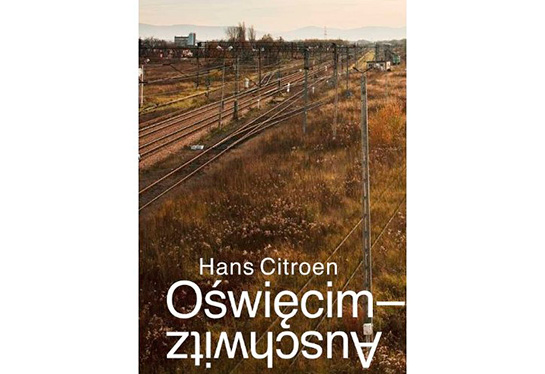Review: Auschwitz-Oswiecim, Oswiecim-Auschwitz by Hans Citroen and Barbara Starzynska

“In the late eighties, Dutch artist Hans Citroen meets Barbara Starzyńska, a Polish architect, and ends up visiting [her] relatives in Oświęcim, the city where his grandfather survived KZ Auschwitz.” (source) It’s coincidences like this one that often make life feel a little strange. And they certainly did get strange and then stranger when Citroen and Starzyńska started to look into the relationship between Oświęcim and Auschwitz, the latter presumably just the infamous concentration camp outside the city. (more)
As it turned out things happened to be considerably more complex, with Oświęcim ending up being more of Auschwitz than the locals would want to be comfortable with. In the 1940s, Oświęcim became not just the site where a concentration camp was situated - alongside the facilities constructed only for the purpose to kill people and burn their bodies. There was also a large IG Farben factory built, which ended up running as a Polish owned factory for a long time.
On top of that, running the site required large amounts of people, so the buildings inhabited by the SS and by some of the most ruthless war criminals of all times not only still exist, they are now being lived in. An SS building has become a school, for example. Many of the poles for the various fences were repurposed, as were actual camp barracks.
And then there is the fact that the ashes and crushed bones of those hundreds of thousands of people killed had to be disposed of somewhere. Turns out, they are everywhere. Reading about this, and seeing everything meticulously documented in the pages of Hans Citroen and Barbara Starzyńska’s Auschwitz-Oświęcim, Oświęcim-Auschwitz is an incredibly sobering experience that puts a whole new scale on the site.
The key to unearthing all these facts (incl. the location of the main ramp used for the infamous selection process) required persistence above anything else. It required persistently asking questions, persistently not being satisfied with simple answers. The process often enough resulted in struggles between Citroen and Starzyńska: How could the place of one’s mostly happy childhood memories be such a place of horror outside of the fences of the official memorial site (which, as it turns out, only covers a very small fraction of the actual site)?
With over one hundred pages of text, Auschwitz-Oświęcim, Oświęcim-Auschwitz makes for an engaging, albeit at times a bit slightly disconcerting read (occasionally a bit too much righteousness for the sake of being right). The presence of the many, many photographs helps understanding what is going on, and there are simple references between the text and the photographs. To fully comprehend the book, the viewer has to read the text - otherwise, things remain a bit too puzzling I found (which hints at the many complexities).
For all these various reasons, the book is not an easy read; but it is one the reader will not regret submitting to.
Auschwitz-Oświęcim, Oświęcim-Auschwitz; photographs and text by Hans Citroen and Barbara Starzyńska; 416 pages; Post Editions; 2012